Ready to witness some of the rarest and most breathtaking birds in the U.S.? These feathered wonders aren’t just your average backyard species—they’re the elusive creatures that every birdwatcher dreams of spotting.
From secretive woodlands to remote wetlands, these birds are masters of disguise and survival. But finding them? That’s the ultimate challenge. These rare birds make every moment in the wild feel like an adventure.
Some might only appear during a fleeting migration, while others nest in spots only the most dedicated can reach. But for those who are determined, the thrill of a rare sighting is unmatched.
So grab your binoculars and prepare for the hunt of a lifetime. The 18 rarest birds in America are waiting—and they’re just as mysterious as they are stunning. Ready to meet them? Let’s take flight!
California Condor
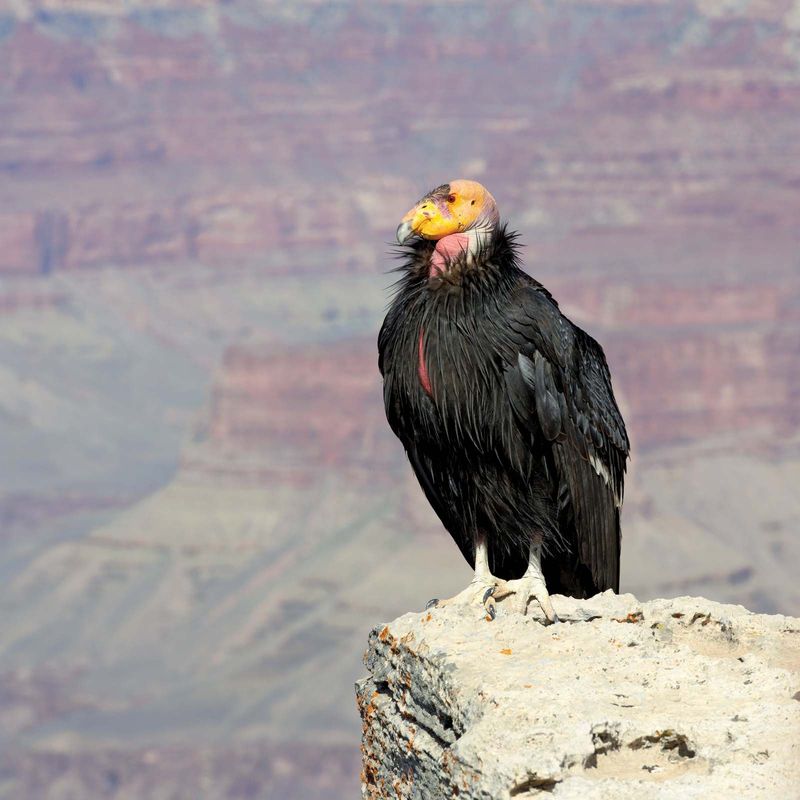
The California Condor, with a wingspan stretching nearly ten feet, is a majestic sight. This critically endangered bird primarily roams the skies of California and Arizona. In recent years, conservation efforts have increased their numbers, giving hope to birdwatchers.
Spotting a California Condor requires patience and persistence, often rewarding observers with a breathtaking view of these giants soaring. They feast on carrion, playing an essential role in the ecosystem by cleaning up carcasses.
For those fortunate enough to witness them, the sight of a California Condor in flight is unforgettable.
Kirtland’s Warbler
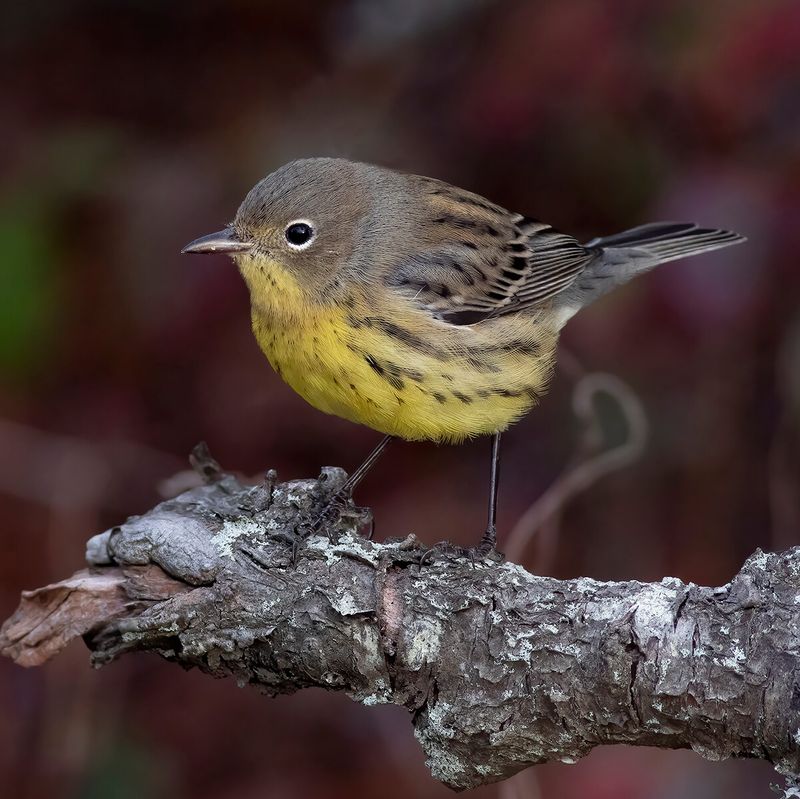
Kirtland’s Warbler is a small songbird that migrates between Michigan and the Bahamas. With its distinctive yellow belly and gray back, it stands out among the pines.
This bird prefers young jack pine forests, making it a challenge to spot as its habitat is limited. Conservation efforts have been crucial in maintaining its population.
Birdwatchers dreaming of observing the Kirtland’s Warbler should visit Michigan in early summer when males are most active, singing to attract mates. This rare encounter leaves birdwatchers thrilled and satisfied.
Ivory-billed Woodpecker
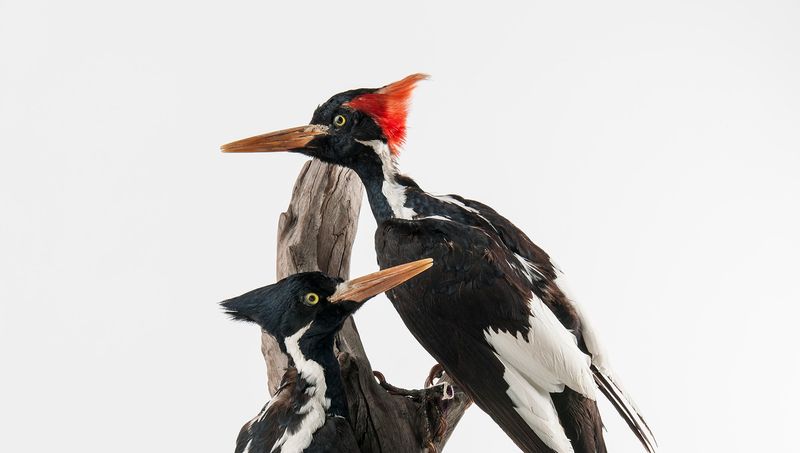
The Ivory-billed Woodpecker, possibly extinct, remains a legend among birdwatchers. This large woodpecker, with its striking black and white plumage, was last reliably sighted in the dense swamps of Arkansas.
Despite extensive searches, confirmed sightings remain elusive, fueling intrigue and mystery. Birdwatchers often embark on expeditions to potential habitats, hoping for a rediscovery.
Its habitat destruction led to its decline, but hope persists among enthusiasts. An encounter with the Ivory-billed Woodpecker would be a historic moment in ornithology and a dream come true for birdwatchers.
Whooping Crane
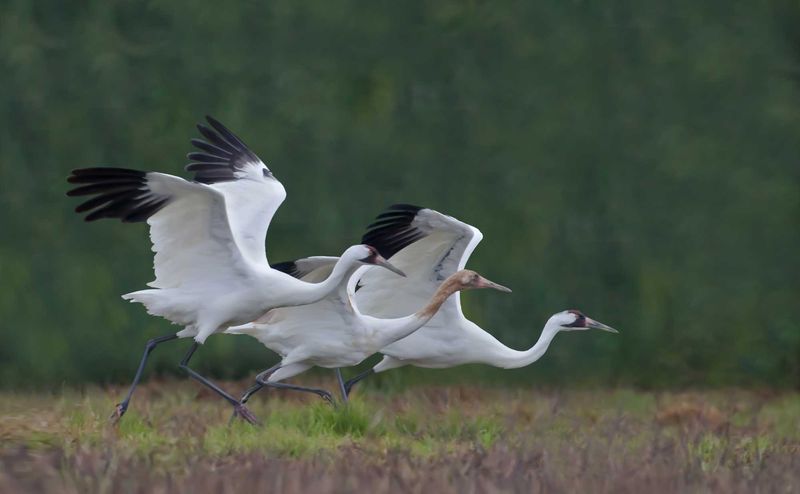
Whooping Cranes are among North America’s tallest birds, recognized for their graceful stature and pure white plumage. These cranes migrate between Canada and the coastal marshes of Texas.
Their population dwindled to near extinction, but conservation actions have led to a gradual recovery. Birdwatchers seeking to see Whooping Cranes should head to Texas during the winter months.
Watching these cranes in their natural wetland habitat is a sight to behold, inspiring awe and appreciation for conservation efforts. Their distinctive calls resonate across the marshes, leaving a lasting impression.
Red-cockaded Woodpecker
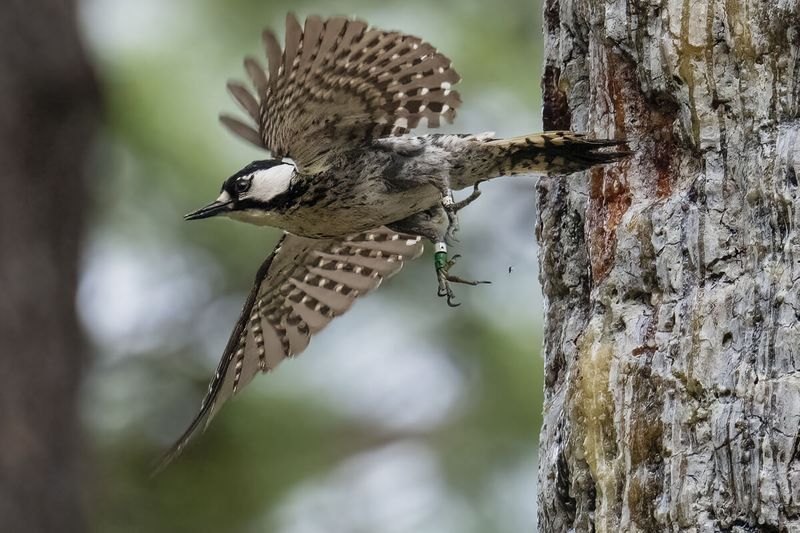
The Red-cockaded Woodpecker inhabits mature pine forests in the southeastern United States. Known for their cooperative breeding behavior, these birds live in family groups.
With their unique black cap and white cheek patches, they are a treat for birdwatchers. Habitat loss has made them rare, leading to focused conservation efforts.
Birdwatchers aiming to spot a Red-cockaded Woodpecker should visit managed forests with mature pines. Observing their social behavior and listening to their calls adds excitement to any birdwatching trip. Their presence signifies a healthy, well-managed ecosystem.
Gunnison Sage-Grouse
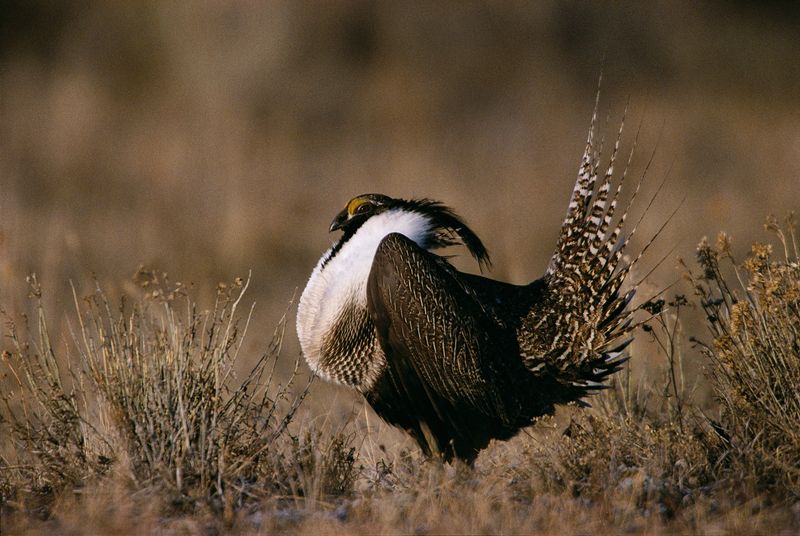
The Gunnison Sage-Grouse, with its elaborate mating dance, captivates birdwatchers in Colorado. Males display striking plumage and fan-like tail feathers during their courtship rituals.
This bird’s habitat is limited to sagebrush areas, making sightings rare and special. Conservation measures aim to preserve its dwindling numbers and habitat.
Witnessing the courtship dance of the Gunnison Sage-Grouse is a unique experience, offering insights into its behavior. Birdwatchers cherish these moments, as the dance showcases nature’s intricate rituals. Observers often leave with a deeper appreciation for this rare species.
Florida Scrub-Jay
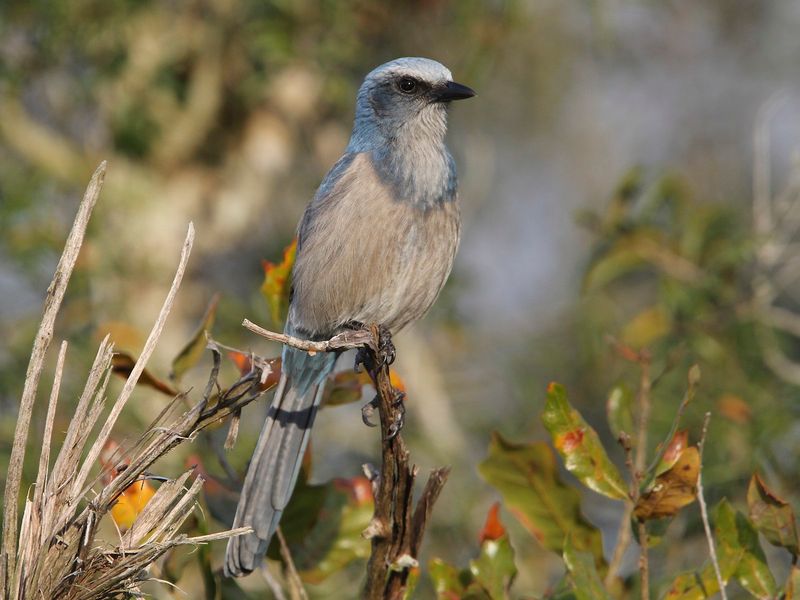
The Florida Scrub-Jay, with its vivid blue coloring and inquisitive nature, is the only bird species unique to Florida. It inhabits scrubby flatwoods and relies on fire-maintained ecosystems.
Birdwatchers visiting Florida often seek this rare species, drawn by its friendly demeanor and distinct calls. Its limited range makes sightings particularly rewarding.
Efforts to preserve its habitat are crucial for its survival, as urban development poses significant threats. Encountering a Florida Scrub-Jay offers birdwatchers a glimpse into Florida’s unique avian diversity, enhancing their appreciation for regional conservation.
Bachman’s Sparrow
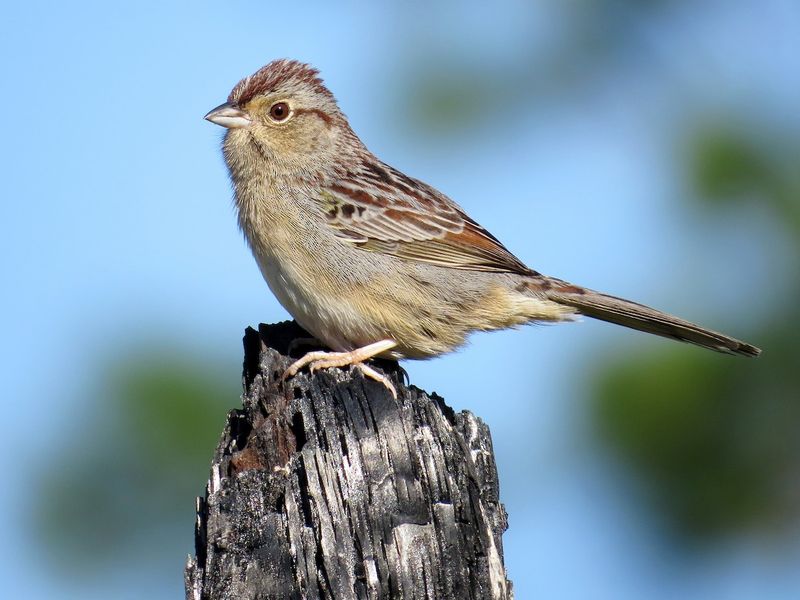
Bachman’s Sparrow, with its melodic song, inhabits open pine woods in the southeastern United States. Its subtle brown and gray plumage blends seamlessly with its surroundings.
This sparrow’s preference for fire-managed ecosystems makes it a challenge to spot. Birdwatchers are often rewarded with its sweet song, echoing through the woods.
Conservation efforts focus on maintaining its habitat, crucial for its survival. Observers seeking Bachman’s Sparrow should visit during the breeding season when males are actively singing. The encounter offers both auditory and visual delights, making the search worthwhile.
Sprague’s Pipit
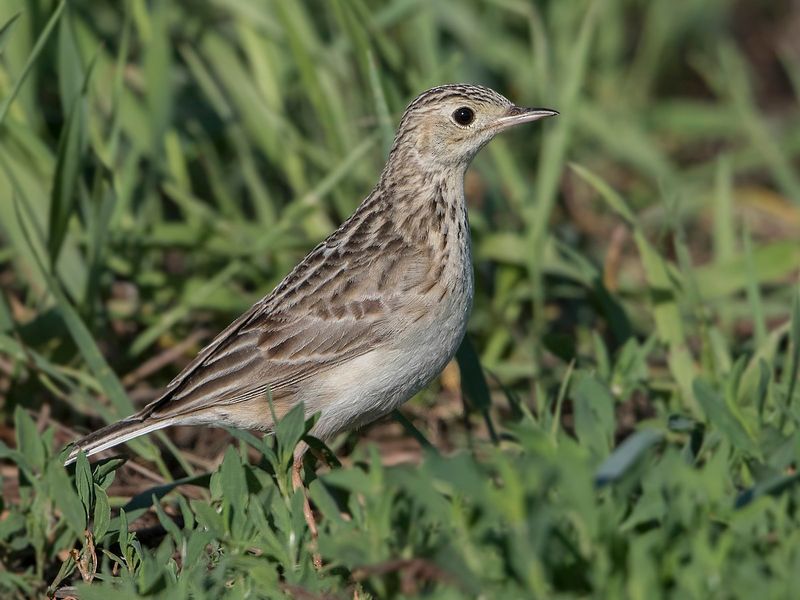
Sprague’s Pipit, a grassland songbird, is renowned for its distinctive aerial display flights. Found primarily in the northern Great Plains, it has subtle streaked plumage.
This bird’s unique flight songs echo across the grasslands, providing a sonic backdrop to its habitat. Birdwatchers often focus on listening to locate this elusive bird.
Conservation of grassland habitats is vital for its survival, as agricultural expansion threatens its breeding grounds. Spotting a Sprague’s Pipit requires dedication, but the reward is an unforgettable auditory experience paired with the bird’s graceful aerial acrobatics.
Baird’s Sparrow

Baird’s Sparrow, with its distinctive yellowish face and streaked back, thrives in the open prairies of the northern United States. This elusive bird is a prize for avid birdwatchers.
Its subtle coloring provides excellent camouflage among the grasses, making sightings rare. During the breeding season, their melodious songs fill the air, guiding observers to their presence.
Conservation efforts aim to protect prairie habitats, crucial for their continued survival. Birdwatchers seeking Baird’s Sparrow often explore vast grasslands, rewarded with both a visual and auditory spectacle as these sparrows sing. This offers a memorable encounter.
Elegant Tern
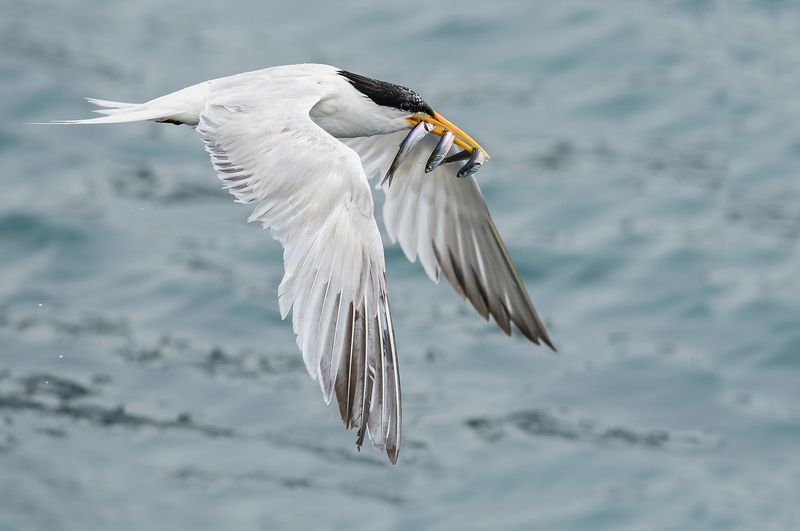
The Elegant Tern, with its slender orange bill and graceful wings, frequents the coastal beaches of California. Known for their social colonies, they provide a spectacular sight during breeding season.
Birdwatchers often gather at nesting sites to observe these terns, noting their distinctive calls and aerial acrobatics. Their breeding colonies are a bustling hub of activity.
Conservation of coastal habitats is essential for their survival, as human activities threaten nesting sites. Spotting an Elegant Tern provides a vivid window into coastal bird life, leaving observers awestruck by their beauty and grace.
Mangrove Cuckoo
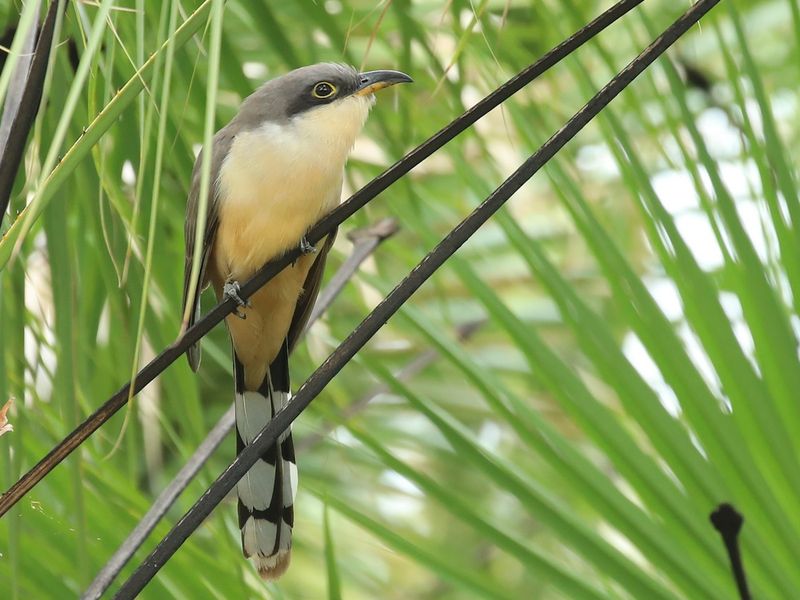
The Mangrove Cuckoo, with its distinctive curved bill and soft gray and yellow plumage, is a secretive bird found in Florida’s mangroves. Its elusive nature makes sightings rare but rewarding.
Birdwatchers often listen for its distinctive calls, which resonate through the dense mangrove forests. Conservation of these habitats is vital for the cuckoo’s survival.
Spotting a Mangrove Cuckoo requires patience and a keen ear. Successful birdwatchers cherish the experience, both for the challenge and the insight into this unique ecosystem. It is a rare gem among North America’s avian treasures.
Henslow’s Sparrow
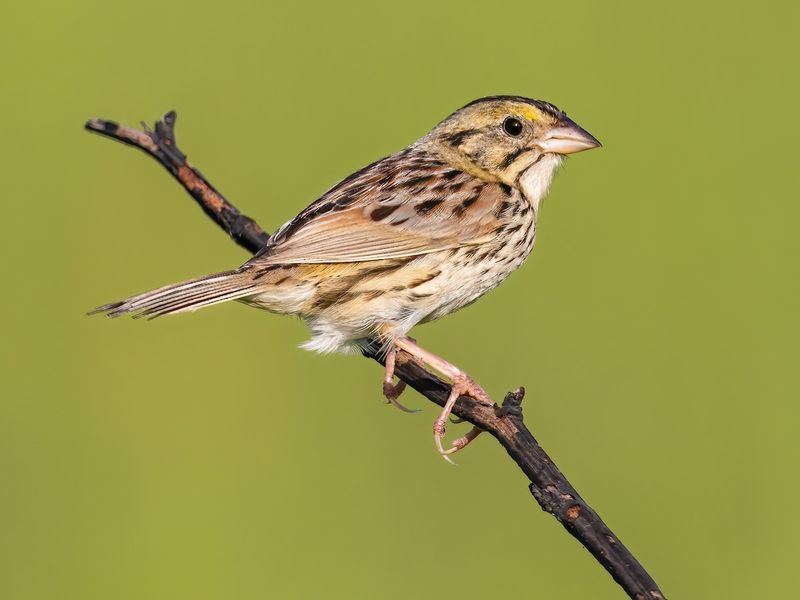
Henslow’s Sparrow, with its olive-green face and finely streaked chest, is a resident of the Midwestern prairies. Its preference for tall grasses makes it challenging to spot.
Birdwatchers often rely on its distinctive insect-like song to locate it. Conservation of tallgrass prairies is critical for its survival, as these habitats dwindle.
Observing a Henslow’s Sparrow is a rewarding experience that requires a trained ear and careful exploration. Its presence signifies a healthy prairie ecosystem, encouraging conservation efforts. This sparrow is a prized find for birdwatchers exploring America’s heartlands.
Yellow Rail
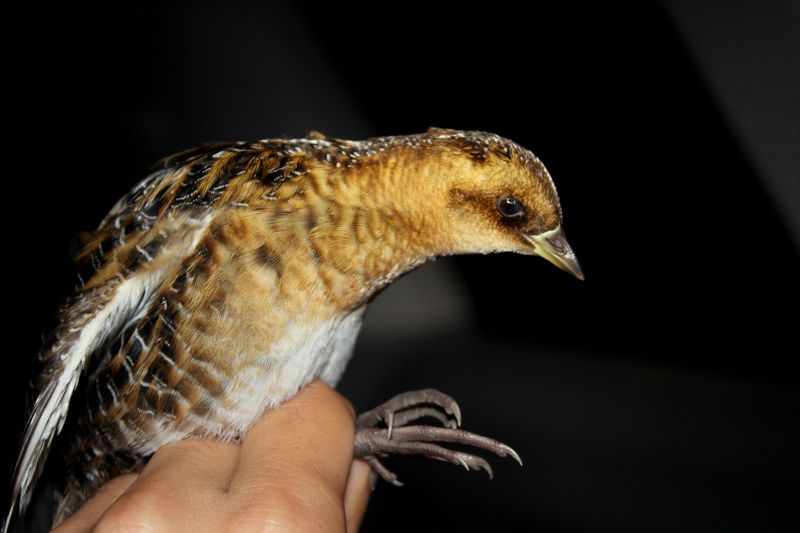
The Yellow Rail, with its striped brown and yellow plumage, is a secretive bird found in North American wetlands. Its elusive nature makes it a sought-after sighting for birdwatchers.
Most active at dawn and dusk, the Yellow Rail is often heard rather than seen, adding mystery to its allure. Birdwatchers often listen for their distinctive clicking calls.
Conservation of wetland habitats is crucial for the survival of the Yellow Rail. Spotting this elusive bird provides an exhilarating experience, as it flits among the reeds. It remains a cherished sighting for dedicated bird enthusiasts.
Black Rail
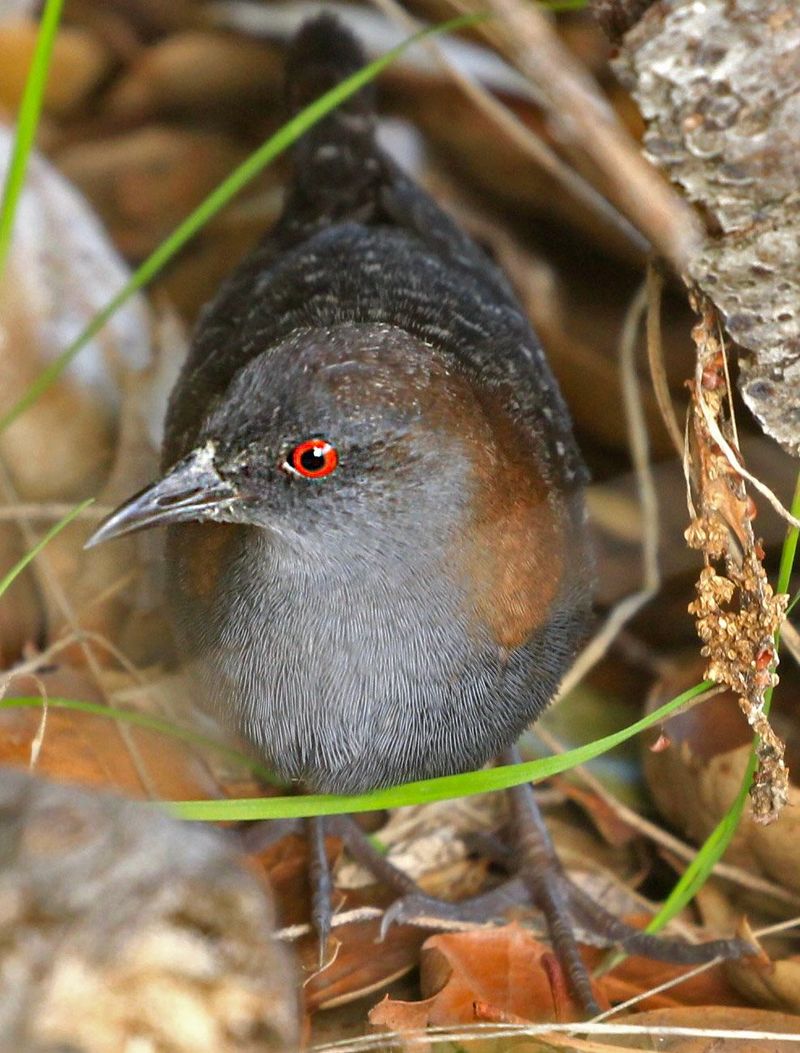
The Black Rail, the smallest of the rail family, is notoriously elusive, dwelling in the salt marshes of the southeastern United States. Its black body and piercing red eyes are a rare treat for birdwatchers.
Known for its secretive behavior, it often remains hidden in dense vegetation. Birdwatchers listen for its distinctive ‘kik-kik-kerr’ call, a signature sound of its marshy habitat.
Conservation of salt marshes is vital for its survival, as these habitats face threats from development. Encountering a Black Rail requires patience and luck, leaving observers thrilled by the mystery of this tiny bird.
Buff-collared Nightjar
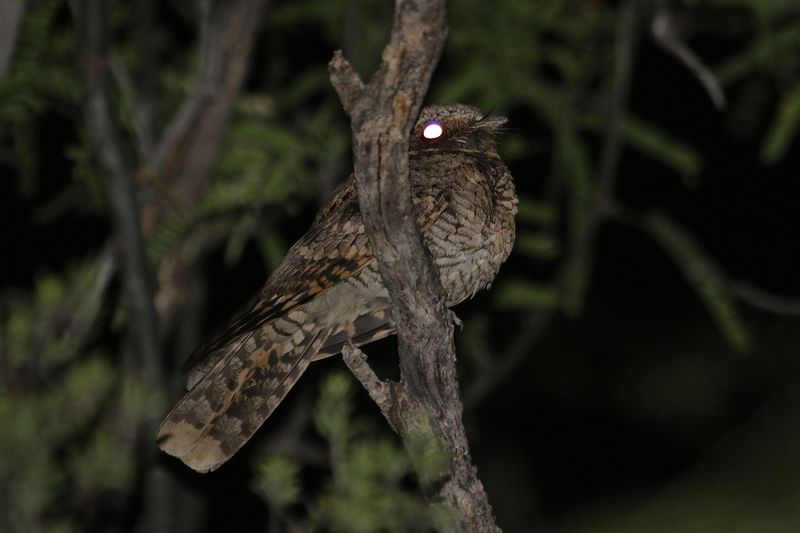
The Buff-collared Nightjar, with its cryptic brown and buff plumage, is a master of camouflage. Found in the deserts of Arizona, it blends seamlessly with its surroundings.
Birdwatchers often embark on nocturnal excursions to hear its enchanting calls echoing through the night. These nightjars roost on the ground, making them challenging to spot.
Conservation of desert habitats is essential for their continued existence, as human activities threaten these areas. Observing a Buff-collared Nightjar is a magical experience, offering insights into the mysterious world of nocturnal birds. Enthusiasts cherish these rare encounters.
Antillean Nighthawk
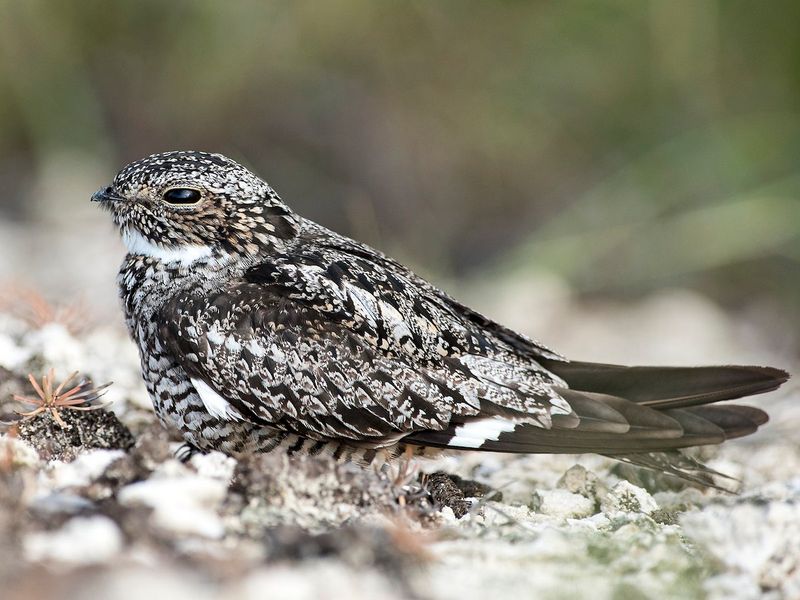
The Antillean Nighthawk, known for its long wings and white wing bars, is a summer visitor to Florida’s coastal marshes. Its distinctive ‘peent’ call is a familiar sound at dusk.
Birdwatchers seek this nighthawk drawn by its aerial displays and cryptic plumage that blends with sandy habitats. Conservation of coastal areas is crucial for its seasonal visits.
Spotting an Antillean Nighthawk requires timing and keen observation skills. Observers often enjoy the serene coastal environment while watching their spectacular flight patterns. It provides a unique glimpse into the life of these migratory birds, enriching any birdwatching experience.
Aplomado Falcon
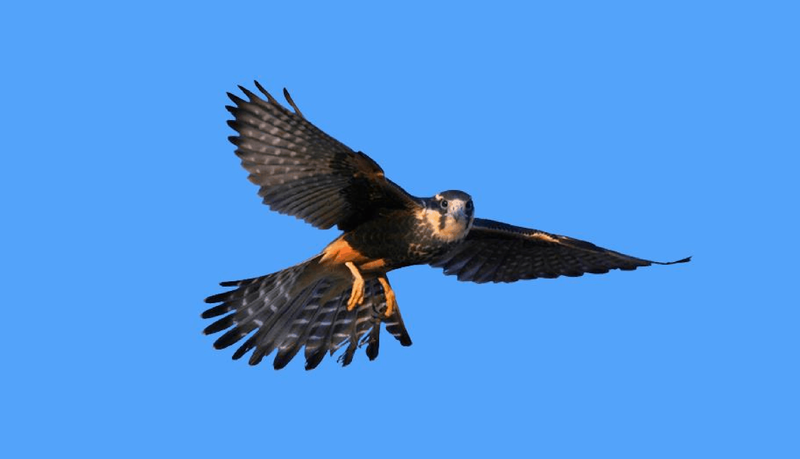
The Aplomado Falcon, a striking bird of prey, graces the skies of the southwestern United States. With its slender silhouette and long, pointed wings, this falcon is a marvel to behold. Its vibrant plumage features a bold pattern of slate gray, russet, and white, making it unmistakable to those lucky enough to spot it.
Found in open landscapes, this raptor prefers grasslands and deserts, where it preys on small birds and insects. Unfortunately, habitat loss and historical falconry pressures have reduced its numbers, rendering it a rare sight. Conservation efforts are underway to ensure its survival.

